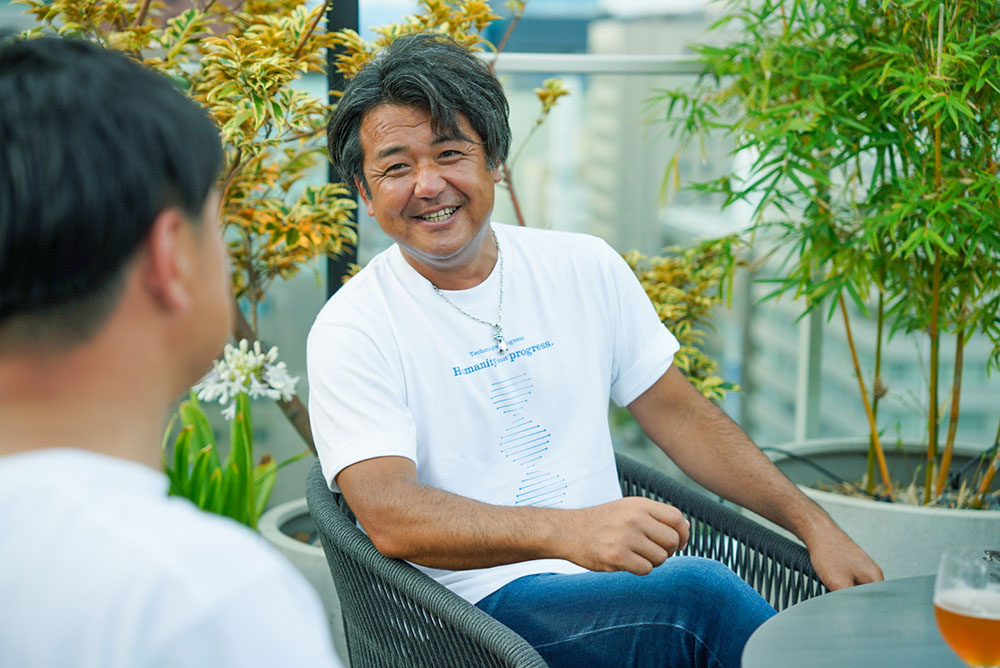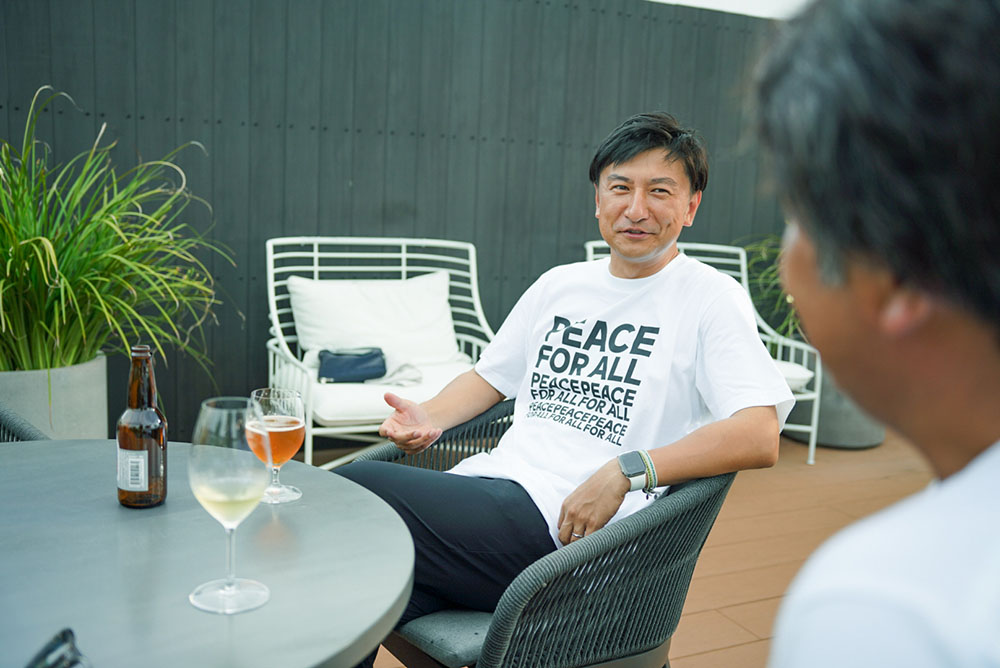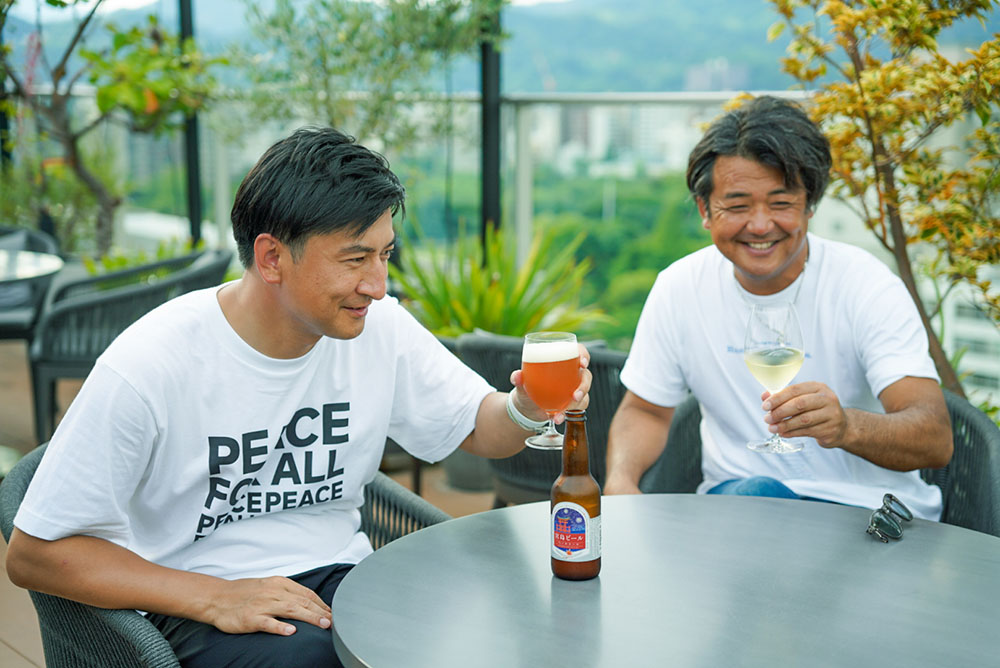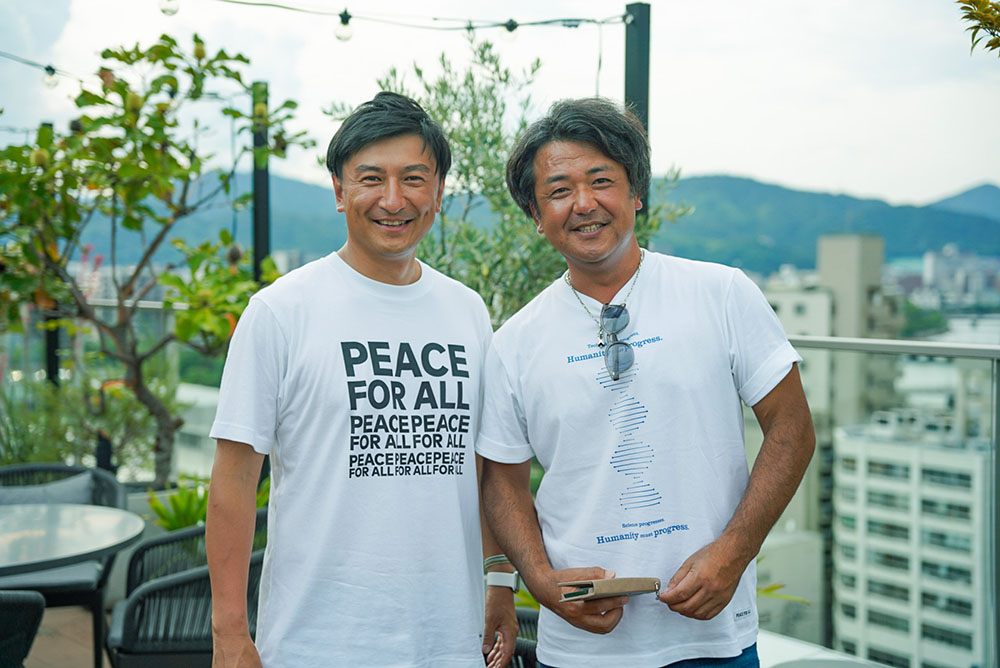This article can be read in about 8 minutes.
The first episode of “Nippon no Umi to Bunka (Sea and Culture of Japan),” Hiroshima, was released in December 2022. 2 locations were filmed in April and July 2022, and Yuta Kawamoto (“Kawamoto”), a representative of Oceana, and Yasuaki Kagii (“Kagii”), an underwater photographer, were completely fascinated by Hiroshima. Here is an interview with the two after the shoot in Hiroshima.The Sea and Culture of Japan – Episode 1: Hiroshima Bay and Miyajima Island, Hiroshima Prefecture: An island of gods with a rich seaweed forest.A sea that makes you want to go home immediately.
I strongly felt the passion of the divers I met for Hiroshima Bay.
Oshana Editorial Department (hereafter, –) We have successfully completed our second Hiroshima location. Thank you very much for your hard work. First of all, I would like to ask you about your impressions of the sea in Hiroshima after completing the two location shoots.
Kawamoto: Mr. Kagii, did you find the sea in Hiroshima interesting?
Mr. Kagii: To be honest, there were not many fish when we first came to film in April, and I was expecting the fish to be a bit thicker in July, doubling the number of fish we could see, but I guess not… But the local divers I was with never said anything negative like “the clarity was bad” or “there were no fish” when we came back to the boat after the dive. They have positive conversations about what was good about the current conditions in Hiroshima Bay. I thought this was a great thing.
Kawamoto: Local people always start off by talking down to each other (laughs). No, there aren’t many fish,” or “It’s just a big sea,” they would say. But I think the purpose of the “Sea and Culture of Japan” trip was to discover the charm of the sea in the places we visited, and I think we found many good things. If you ask me if I would like to go diving again, I would answer that I would.
However, if I were to come back next time, I would definitely have to go to the okonomiyaki restaurant “Suigun” and have a drink with Mr. Kagii, instead of diving from morning to night (laughs).
Mr. Kagii: When we were filming underwater, there was one place where you asked Mr. Kawamoto to go in there. The place where sea strawberries were growing thickly in the shallows. That view was impressive.

Kawamoto: Am I a good model? I had never dived with a photographer before, so I wondered if it was all right for me to dive like that. I wondered if it was okay like that. It is difficult to model underwater.
Mr. Kagii: I thought Mr. Kawamoto came in at a good spot where there was a line of mebaru, but he disappeared while I was preparing to change the way I was going to take the picture (laughs).
Kawamoto: That’s right (laughs). I guess I didn’t make enough eye contact. I haven’t had a camera pointed at me like this since my wedding. Of course it must be difficult for the photographer, but it must also be difficult for the photographed…
Ms. Kagii: Normally, you don’t experience being photographed that much.
–How was L・M・Marin, the company that took care of you this time?
Kawamoto: L.M. Marine is a professional store that provides training and other services, as well as a local service that makes the sea enjoyable. They are very service oriented. There must be many stores like this in Japan, but not many of them are introduced to the public.
Even if the scenery is beautiful and the sea is stunning, I would never go back if I didn’t have a good guide. But after meeting the people of L.M. Marine on location this time, I thought, “I have to go back to Hiroshima again. There are such good people there.
Mr. Kagii: Of course, there is the personality of the owner, Mr. Moriya, and everyone else, but the people at the store take pride in Hiroshima Bay.
Kawamoto: Mr. Moriya, the owner, says modestly, “It’s not much of a sea,” but in reality, he has an unyielding passion for this sea. I could feel his strong desire when I talked with him. I was very happy to hear that.
Meeting the local flavors and people is the best part of traveling!
Kawamoto: Mr. Kagii, you have done a lot of magazine interviews in the past, haven’t you? How was your experience on location for “Nippon no Umi to Bunka (Sea and Culture of Japan)” this time? I think my role is to expand my encounters with people during the interviews, but since you are an artist, I imagine you must have given a lot of thought to how the photos would be taken.
Mr. Kagii: I didn’t go out for a drink last night, did I? That was the most important thing. I made sure I was prepared for the next day. I can’t help it if I get drunk, can I? This is important (laughs)!
Kawamoto: You are here to cover the event with a large staff, including Mr. Kagii, who will be in charge of photography, Oshana’s cameraman Mr. Tsubone, and other cameramen and editors who will be shooting the video. This is the first time for Oshana to have a large team covering the event. I still don’t know what the right way to do the coverage is, but after two on-location shoots, I felt that the Japanese ocean has great potential, and that was a very encouraging sign.

–After the two location shoots, could you tell us about the scenery, food, or anything that left a particularly strong impression on you two?
Mr. Kagii: I would have to say the mebaru sashimi. We all ate it yesterday and it was delicious!
Kawamoto: Mebaru⁉︎
Mr. Kagii: When I dived in April, there were almost no fish in the water, but this time I found many juvenile mebaru. I don’t know if mebaru are that attractive as a subject (laughs), but I thought I had found a fish that represents Hiroshima. That’s one of the reasons it tasted so good.
–The mebaru sashimi I bought at a department store in Hiroshima City was much cheaper than in Tokyo, and it was sweet and crunchy. How was the Hiroshima beef?
Mr. Kagii: It was delicious because Mr. Kawamoto grilled it for me (laughs)!
–How about you, Mr. Kawamoto?
Kawamoto: I was surprised by the oysters. I mean, they were only 200 yen each. I would never buy frozen oysters as a souvenir. But when I steamed the frozen oysters in the kitchen and ate them on the spot, I was surprised at how delicious they were! I thought. So I realized that there are a lot of things you don’t understand until you try them. As a person involved in the media, I thought that it is a terrible thing to tell people something without having tried it and without understanding it.
–In the “Nippon no Umi to Bunka” (Nippon’s Sea and Culture) filming, we introduced a new experiment called “NUB-Meshi,” in which we all ate together at an inn with a kitchen to eat what we wanted to try in that particular area. After all, I realized once again that there were many things I could learn by doing this. I am looking forward to seeing what kind of flavors we will encounter at future locations as well.
Kawamoto: I believe that “the media are people, too. The people who create the media there introduce what they really think is good. It is not about introducing something because someone recommended it.
–It was refreshing to see the two of you standing in the kitchen, cooking (laughs).
Mr. Kagii: They were getting better and better at cooking (laughs).
Kawamoto: I think this kind of travel is definitely possible, and I would like to do it on location in the future.
Mr. Kagii: I often do this kind of thing on my own tours. I stand in the kitchen and cook while everyone drinks.
Kawamoto: Of course, I think it is important to visit local pubs and restaurants, and I would like to cherish the encounters I have with people there. If you are lucky enough to go to a popular restaurant that is in the guidebooks and you can’t get a reservation, but you can’t speak a single word with the staff, then it’s not a good idea to communicate with the staff. If that is the case, I think that going to a restaurant where you can communicate with the staff will add more depth to your trip. I believe that “meeting people” is the most important part of the “Nippon Sea and Culture” project. The easiest way to get close to people is to meet them through diving-related activities.
Mr. Kagii: I always think so, but the relationship between people changes before and after diving together. The distance between us becomes much closer. Going to the sea together is an amazing thing, isn’t it?

–I felt that the relationship between the two of you has also deepened after the two locations. Finally, could you tell us your thoughts on the first Hiroshima episode?
Mr. Kagii: As Mr. Moriya, the owner of L.M. Marine, said, the sea potential of Hiroshima Bay is not as high as that of Okinawa. I felt Oceana’s courage in taking up this issue as the first episode of “Nippon no Umi to Bunka (Sea and Culture of Japan)” (laughs).
Kawamoto: I have been a diving instructor for 20 years and have conducted many courses. I am proud of the fact that I have changed people’s lives there. I was teaching at a beach point in Nanki-Shirahama on the Kii Peninsula, and the people who compared the ocean there to the ocean in Okinawa were the ones I disliked the most. I don’t want to say that there are better seas when there are people who are impressed by the sea in front of them right now. I believe that each of Japan’s oceans has its own advantages. I would like to find and introduce many good places with Mr. Kagii and his team from that perspective in the places we will cover in the future.
–I am looking forward to seeing what kind of oceans, people, and local culture we will encounter in the future. Thank you very much.
After two on-location shoots for the first episode, Mr. Kagii and Ms. Kawamoto became more friendly than before and shared many stories with us. Another journey will continue from now on, and we wonder what kind of scenery they will see and what kind of story they will tell. What kind of scenery will they see and what kind of stories will they tell?
The second episode of “Nippon no Umi to Bunka” (The Sea and Culture of Japan), “Shonai and Tsuruoka, Yamagata Prefecture,” will be released on March 3! This time, underwater photographer Takuya Nakamura will appear as the main photographer. Look forward to it!
